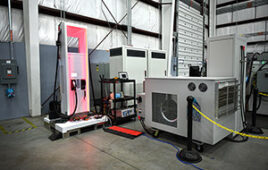 Is RAID dead or alive? Are erasure codes replacing RAID for data protection?
Is RAID dead or alive? Are erasure codes replacing RAID for data protection?
We present these questions, because some storage vendors promote RAID, while others promote erasure codes. Looking at how vendors are marketing data protection in their products, it almost appears that there is a battle between RAID and erasure code technology and that everyone will agree on a winner at some point.
The truth is that these are the wrong questions! An understanding of what RAID and erasure codes really are is first needed to ask the right questions about RAID for data protection.
What is RAID?
RAID is an acronym for redundant array of independent disks. RAID technology has been utilized for years to recover and rebuild data that would otherwise have been lost due to disk errors. RAID has traditionally been implemented in hardware RAID controllers, so RAID is often understood to be synonymous with hardware RAID.
Despite the presence of the word “disks” in the acronym, RAID was never intended to be limited to only hardware-based implementations. The original 1988 Berkeley RAID paper, co-authored by Panasas founder Dr. Garth Gibson, did not limit RAID to hardware when it said, “…while the schemes for disk striping and parity support were presented as if they were done by hardware, there is no necessity to do so. We just give the method, and the decision between hardware and software solutions is strictly one of cost and benefit.” As an approach to data protection, RAID is agnostic to hardware and software implementations.
Put simply, RAID is a set of data protection algorithms. The most sophisticated ones use additional parity bits to rebuild data that would otherwise be lost in the event of disk failure.
What are erasure codes?
Erasure codes are a broader class of mathematical algorithm that is a superset of the ones used to implement parity-based RAID levels like RAID 5 and RAID 6. What you may not know is that erasure codes have always been used to implement hardware RAID (running inside RAID controller firmware). However, some vendors have recently coopted the term to exclusively mean software RAID. This causes confusion, since erasure codes are the mathematical root of both hardware and software RAID.
Back to the questions…
So, with this information, it is clear that the original proposed questions don’t make sense. Rather than asking if RAID is dead or alive, one should ask, “Can hardware RAID based on protecting entire hard drives at a block level keep up with the latest generation of multi-terabyte-sized hard drives?” And, when it comes to erasure codes replacing RAID, the better question to ask would be “Can erasure codes be used in a way to increase data protection beyond standard hardware RAID schemes?”
The reality is that RAID is still very much alive, as virtually all storage solutions use RAID for data protection — typically at a RAID 6 level to protect against two simultaneous drive failures. Some products go even deeper, using erasure codes to implement n+3 and higher levels of RAID protection that don’t have a defined RAID level. Either way, RAID using erasure codes is pervasive in storage products.
Robin Harris, chief analyst at TechnoQWAN and author of the StorageMojo blog, was one of the first industry analysts to survey advanced erasure codes going beyond standard RAID levels. He notes, “While hardware RAID arrays aren’t going away, array growth is elsewhere. Advanced erasure code-based storage is growing much faster than hardware RAID and will continue to do so for the next decade because of its flexibility, lower cost and higher availability.”
The trend is that software RAID is increasingly replacing hardware RAID, especially in large-scale deployments where software RAID avoids hardware bottlenecks and scalability limitations. As pointed out in the Berkeley RAID paper, cost and benefit determine the best way to deploy RAID. The cost/benefit ratio of protecting massive volumes of growing unstructured data are now making hardware RAID less and less of an attractive data protection option. As a result, hardware RAID-based deployments are declining in many of the highest-growth storage applications. Software RAID, however, is growing rapidly in these areas.
Panasas was an early adopter of software RAID with erasure codes to implement RAID data protection. Since our first products 10 years ago, we have enhanced our erasure code implementation to include triple parity data protection. Erasure codes have been a key element in our ability to deliver increasing reliability with scale — as many of our customers deploy at scale.
As unstructured data requirements continue to grow, the benefits of using software-based data protection at scale will clearly increase. This does not mean hardware RAID is dead, but it does mean that hardware approaches will almost certainly continue to become less competitive against software RAID for data protection at scale — not only for high performance primary storage like Panasas ActiveStor, but also for archive and cloud environments.
Geoffrey Noer is Vice President of Product Management at Panasas.




